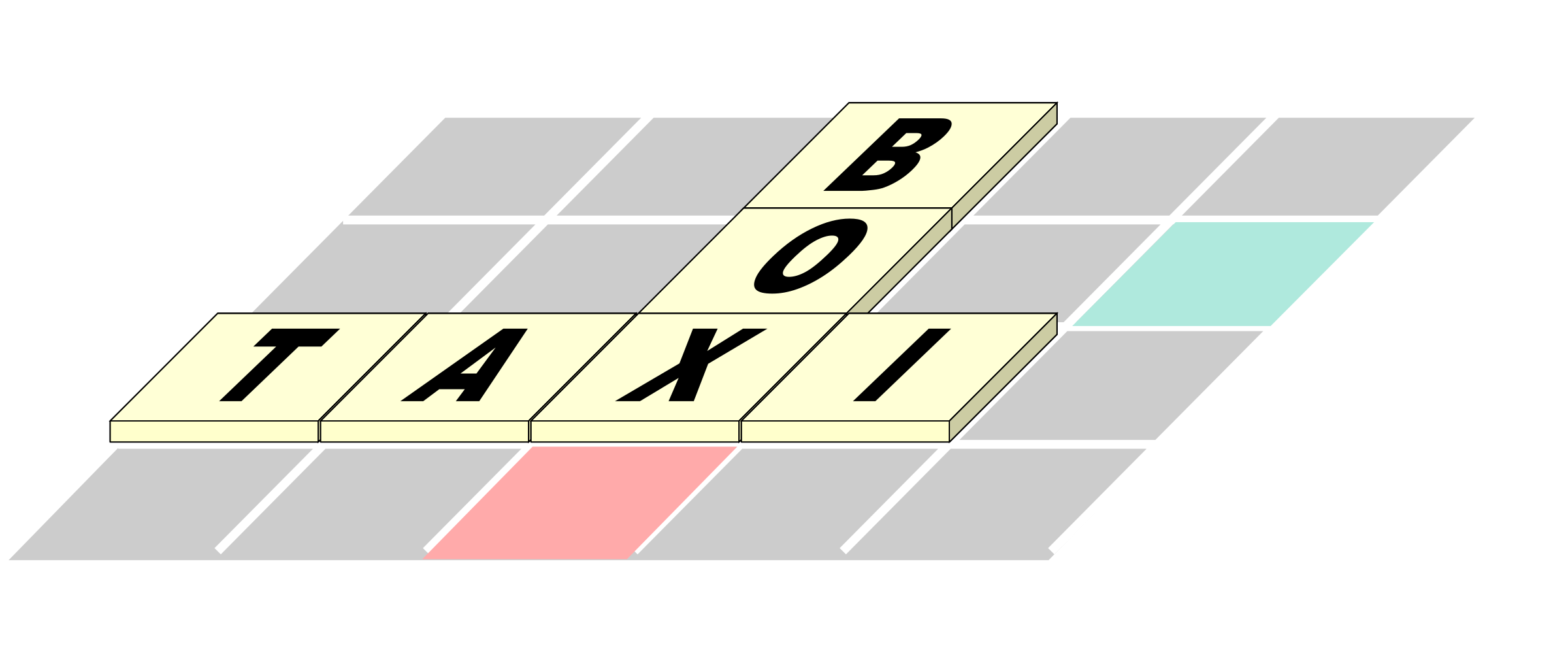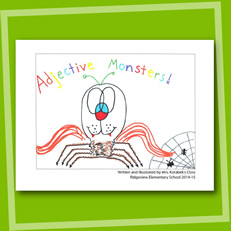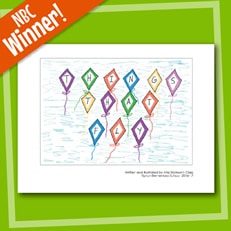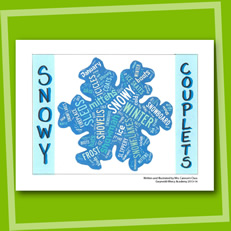
We teachers know the power of words. They are, as Professor Dumbledore said in Harry Potter, “our most inexhaustible source of magic.” The more we learn, the more magical the world around us becomes.
It’s not always easy, however, to convince our students of this. Vocabulary quizzes don’t exactly tend to incite excitement in the classroom, and it can be difficult at times to motivate your students to write and practice using their vocab words. But by keeping the following strategies in mind, teaching vocabulary to your 2nd graders can be every bit as magical as if they were learning new spells at Hogwarts.
Strategy #1: Engage in a Little Wordplay
 Literary wordplay is always good fun—but for your 2nd grade students, playing with words in a literal sense may be the key to making your next vocabulary lesson more engaging and effective. Educational video games are an excellent interactive resource, especially if your classroom has access to one or more computers. Free, age-appropriate games can be found all over the internet in just a few clicks—try checking out PBS Kids and ABCYa for starters. Or, you can opt for analog alternatives such as crossword puzzles, Bananagrams, “Go Fish” using vocabulary flashcards or even a scavenger hunt where students must find all the vocabulary words used in a single block or page of text.
Literary wordplay is always good fun—but for your 2nd grade students, playing with words in a literal sense may be the key to making your next vocabulary lesson more engaging and effective. Educational video games are an excellent interactive resource, especially if your classroom has access to one or more computers. Free, age-appropriate games can be found all over the internet in just a few clicks—try checking out PBS Kids and ABCYa for starters. Or, you can opt for analog alternatives such as crossword puzzles, Bananagrams, “Go Fish” using vocabulary flashcards or even a scavenger hunt where students must find all the vocabulary words used in a single block or page of text.
PROJECT IDEA
A Mad Libs-type “fill in the blanks” game could be the perfect way to both review vocabulary and practice descriptive writing. Take, for example, Adjective Monsters, a classbook published by Mrs. Korabek’s class in which students created their own monsters and then used as many creative adjectives as they could think of to describe their terrible beasties. When publishing your own project, try providing your students with a framed paragraph or two and ask them to describe monsters (or other creatures) of their own using adjectives they’ve studied over the past year.
Strategy #2: Use Loquacious Classroom Decorations
 For many students, adding a visual element can be helpful—even necessary for some—in improving comprehension and retention. But with lessons in words, especially non-nouns, it’s not always obvious how to accomplish this. Consider creating (or having your students create) decorations for the classroom to serve as visual reminders of their vocabulary lessons.
For many students, adding a visual element can be helpful—even necessary for some—in improving comprehension and retention. But with lessons in words, especially non-nouns, it’s not always obvious how to accomplish this. Consider creating (or having your students create) decorations for the classroom to serve as visual reminders of their vocabulary lessons.
For instance, you could create a “word wall” filled with words and definitions. (Hint: try color-coding different parts of speech, or including doodles next to each word to help illustrate meaning.) Or, you could have your students create collages combining vocab words with images and phrases that help them remember what each word means and then put their artwork up for display. Even simply seeing the words themselves on a daily basis could be helpful—consider writing a different sentence on the board every day, using a new vocabulary word each time.
PROJECT IDEA
Miss Erickson’s class at Tipton Elementary employed a similar strategy when publishing Things That Fly. Each word is accompanied by a short description and a lovely illustration. Some words or phrases are more on the imaginative side (like the “flying bicycle” or the “flying cat”), but the effect is the same; these kids definitely know their flying objects! Your students can easily publish their own themed and illustrated vocabulary classbook in just a matter of weeks.
Strategy #3: Practice Vocab Verbally
 Reading aloud is one of the best ways to teach students both how to pronounce words and how to use them in context, whether it’s you doing the reading or your students. But don’t stop at simply reading example sentences from a textbook—try spicing up the lesson by selecting something a little more exciting!
Reading aloud is one of the best ways to teach students both how to pronounce words and how to use them in context, whether it’s you doing the reading or your students. But don’t stop at simply reading example sentences from a textbook—try spicing up the lesson by selecting something a little more exciting!
Fiction, especially poetry and short stories, is always an excellent choice—what kid doesn’t love a good story, after all? Even better, see if you can find (or have your students write!) a script or dramatic excerpt that will let your students see their words in action. Reading a scene from a play or a skit is fun for the whole classroom, as those who are reading get to play pretend, while those who are listening are treated to a vocab lesson and a show.
PROJECT IDEA
Plays and scripts also make for great classbook projects. Just take a look at the book of Snowy Couplets Mrs. Cannon’s class published! Your students could easily create and publish a similarly poetic project by writing couplets (or other types of verse) based on specific vocabulary words and publishing them alongside some beautiful original artwork.
Strategy #4: Create (and Publish!) a Book
 Writing is, of course, a standard part of teaching vocabulary, and for good reason. But again, simply writing a word and its definition over and over isn’t nearly as fun as a more creative approach. Why not ask your students to use their vocab words to write something of their own, something new and unique? For an even more effective (and memorable!) lesson, consider turning your class’s vocabulary words into stepping stones in a larger lesson on the writing process.
Writing is, of course, a standard part of teaching vocabulary, and for good reason. But again, simply writing a word and its definition over and over isn’t nearly as fun as a more creative approach. Why not ask your students to use their vocab words to write something of their own, something new and unique? For an even more effective (and memorable!) lesson, consider turning your class’s vocabulary words into stepping stones in a larger lesson on the writing process.
Ask them to write something using as many vocab words as they can, whether it be a poem, an essay, a story or something else entirely. Then, have them peer edit each other’s work. (This helps solidify the vocabulary lesson, as they must understand the words well enough not only to know how to use them, but how to explain to someone else when they are not using them properly.) Finally, ask them to illustrate their work and help them publish it in a professionally bound and printed classbook. A classbook is the ultimate project for motivating and engaging your young writers, especially when it comes to vocabulary building, as it puts the lesson into context and shows them why what they’re learning is so important.
Teaching Vocabulary Vivaciously
Just as the best wizards know lots of spells, the more vocabulary words your students learn, the better readers and writers they will be! The best way to demonstrate this to them is to show them just how magical words can be, through your lessons and through their classroom activities.
Word games, visual reminders, reading aloud, and publishing a classbook are all excellent strategies for teaching vocabulary to your 2nd graders. Whichever strategies you try, remember—the more opportunities you create for creative play, the more interesting and exciting your lesson plans and your students’ work will be!
For more teaching strategies and other free classroom resources, check out our online teacher’s lounge and sign up for a free publishing kit!
Image sources: Lead image via Shutterstock; Images 1, 2, 3, 4 via OpenClipart.org








